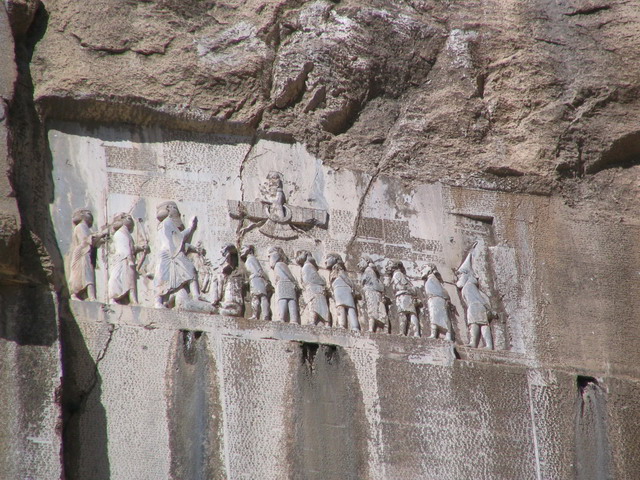Aryan
 ''Aryan'' (), or ''Arya'' (borrowed from Sanskrit ''ārya''), is a term originating from the ethno-cultural self-designation of the Indo-Iranians. It stood in contrast to nearby outsiders, whom they designated as non-Aryan (). In ancient India, the term was used by the Indo-Aryan peoples of the Vedic period, both as an endonym and in reference to a region called ''Aryavarta'' (),}} where their culture emerged. Similarly, according to the Avesta, the Iranian peoples used the term to designate themselves as an ethnic group and to refer to a region called ''Airyanem Vaejah'' (),}} which was their mythical homeland. The word stem also forms the etymological source of place names like ''Alania'' () and ''Iran'' ().
''Aryan'' (), or ''Arya'' (borrowed from Sanskrit ''ārya''), is a term originating from the ethno-cultural self-designation of the Indo-Iranians. It stood in contrast to nearby outsiders, whom they designated as non-Aryan (). In ancient India, the term was used by the Indo-Aryan peoples of the Vedic period, both as an endonym and in reference to a region called ''Aryavarta'' (),}} where their culture emerged. Similarly, according to the Avesta, the Iranian peoples used the term to designate themselves as an ethnic group and to refer to a region called ''Airyanem Vaejah'' (),}} which was their mythical homeland. The word stem also forms the etymological source of place names like ''Alania'' () and ''Iran'' ().Although the stem may originate from the Proto-Indo-European language, it seems to have been used exclusively by the Indo-Iranian peoples, as there is no evidence of it having served as an ethnonym for the Proto-Indo-Europeans. The view of many modern scholars is that the ethos of the ancient Aryan identity, as it is described in the Avesta and the ''Rigveda'', was religious, cultural, and linguistic, and was not tied to the concept of race.
In the 1850s, the French diplomat and writer Arthur de Gobineau brought forth the idea of the "Aryan race", essentially claiming that the Proto-Indo-Europeans were superior specimens of humans and that their descendants comprised either a distinct racial group or a distinct sub-group of the hypothetical Caucasian race. Through the work of his later followers, such as the British-German philosopher Houston Stewart Chamberlain, Gobineau's theory proved to be particularly popular among European racial supremacists and ultimately laid the foundation for Nazi racial theories, which also co-opted the concept of scientific racism.
In Nazi Germany, and also in German-occupied Europe during World War II, any citizen who was classified as an Aryan would be honoured as a member of the "master race" of humanity. Conversely, non-Aryans were legally discriminated against, including Jews, Roma, and Slavs (mostly Poles and Russians). Jews, who were regarded as the arch enemy of the "Aryan race" in a "racial struggle for existence", were especially targeted by the Nazi Party, culminating in the Holocaust. The Roma, who are of Indo-Aryan origin, were also targeted, culminating in the Porajmos. The genocides and other large-scale atrocities that have been committed by Aryanists have led academic figures to generally avoid using "Aryan" as a stand-alone ethno-linguistic term, particularly in the Western world, where "Indo-Iranian" is the preferred alternative, although the term "Indo-Aryan" is still used to denote the Indic branch. Provided by Wikipedia
-
1
-
2
-
3
-
4
-
5
-
6
-
7
-
8
-
9